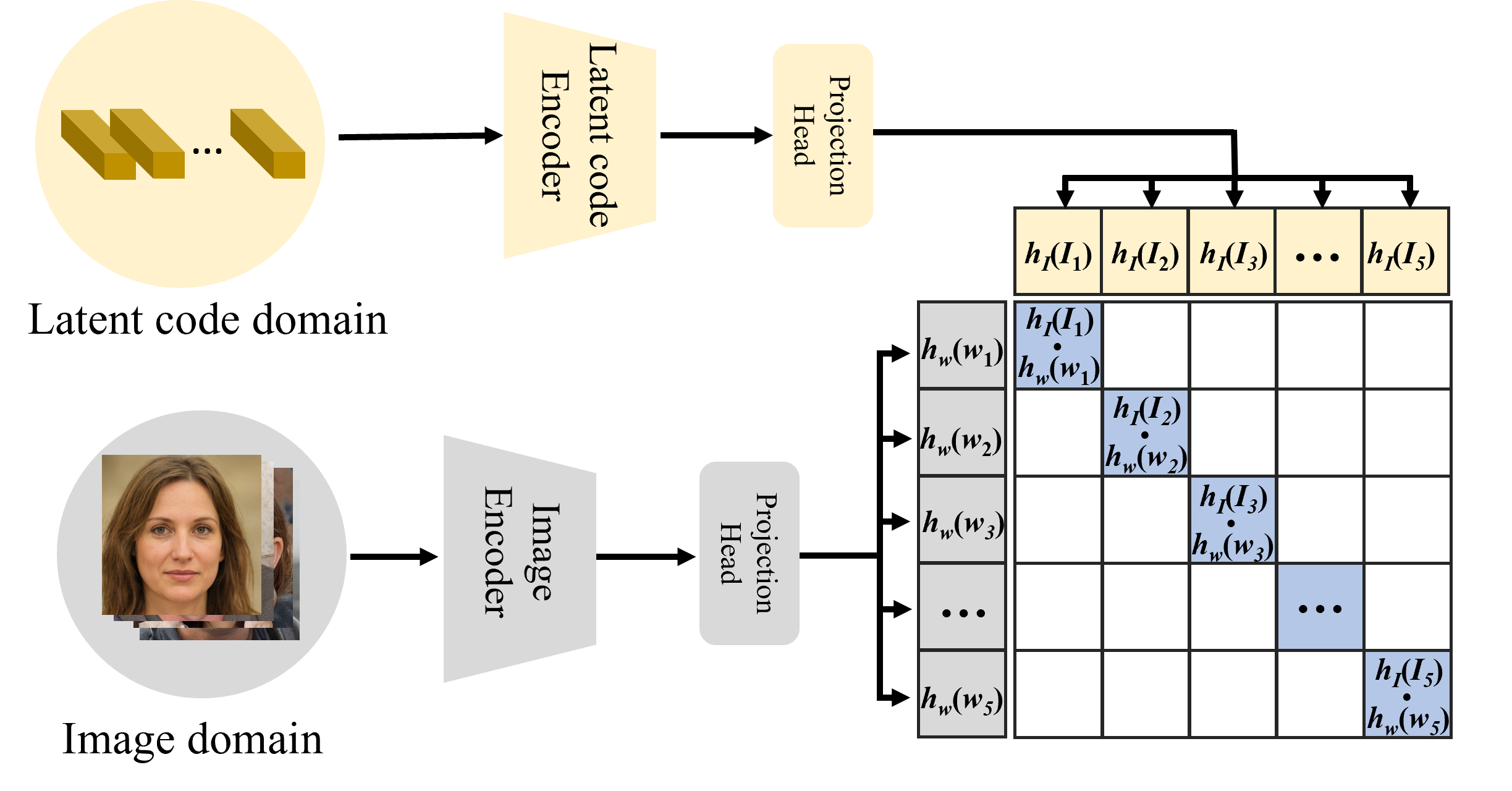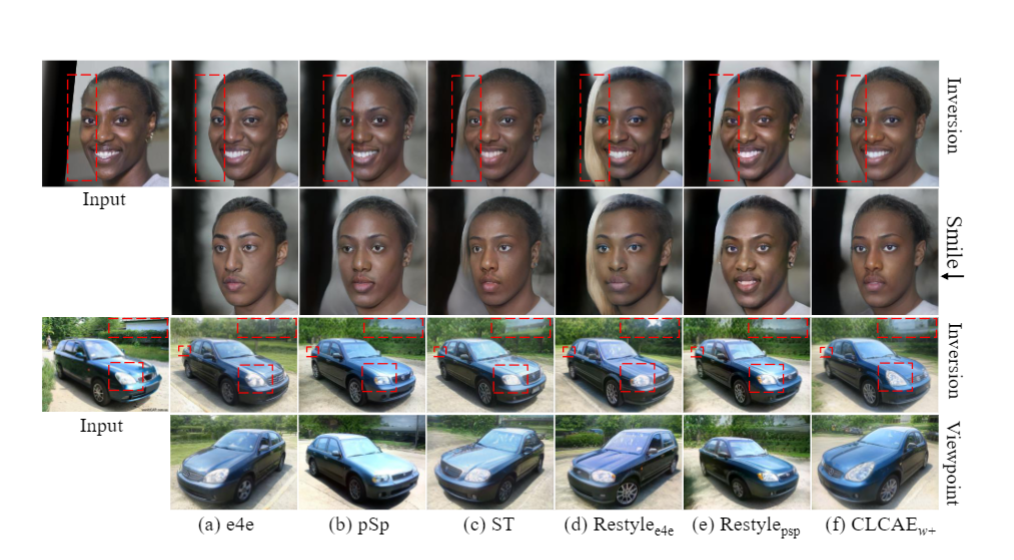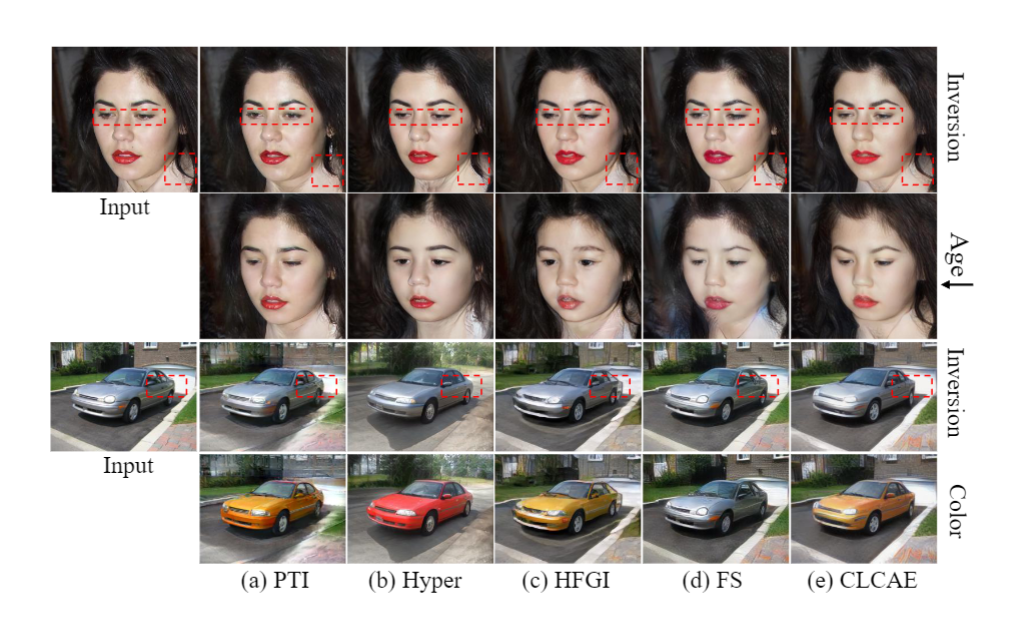GAN inversion and editing via StyleGAN maps an input image into the embedding spaces (W, W+, and F)
to simultaneously maintain image fidelity and meaningful
manipulation. From latent space W to extended latent
space W+ to feature space F in StyleGAN, the editability
of GAN inversion decreases while its reconstruction quality
increases. Recent GAN inversion methods typically explore
W+ and F rather than W to improve reconstruction fidelity
while maintaining editability. As W+ and F are derived
from W that is essentially the foundation latent space of
StyleGAN, these GAN inversion methods focusing on W+
and F spaces could be improved by stepping back to W. In
this work, we propose to first obtain the proper latent code
in foundation latent space W. We introduce contrastive
learning to align W and the image space for proper latent code discovery. Then, we leverage a cross-attention encoder to transform the obtained latent code in W into W+
and F, accordingly. Our experiments show that our exploration of the foundation latent space W improves the representation ability of latent codes in W+ and features in F,
which yields state-of-the-art reconstruction fidelity and editability results on the standard benchmarks




